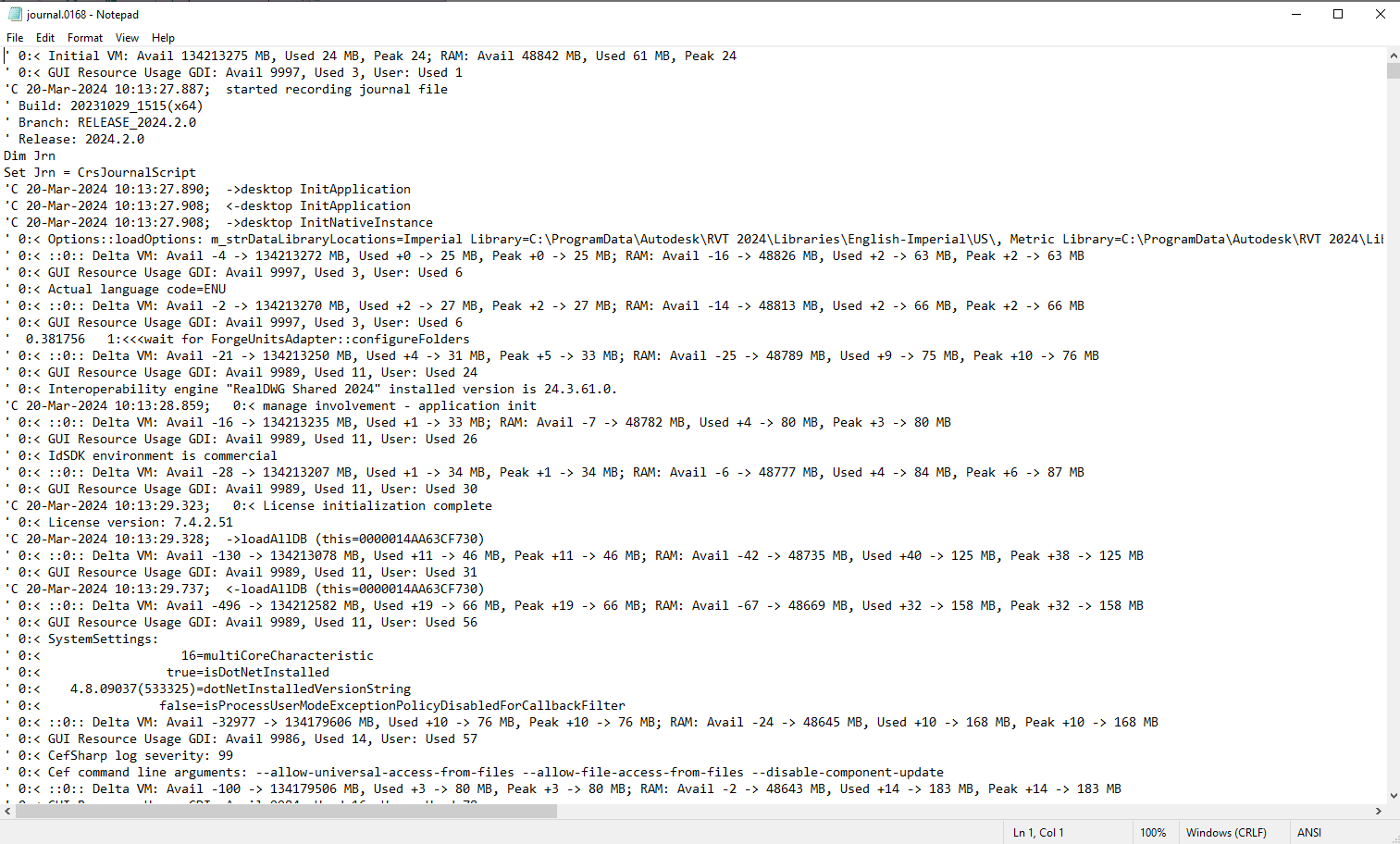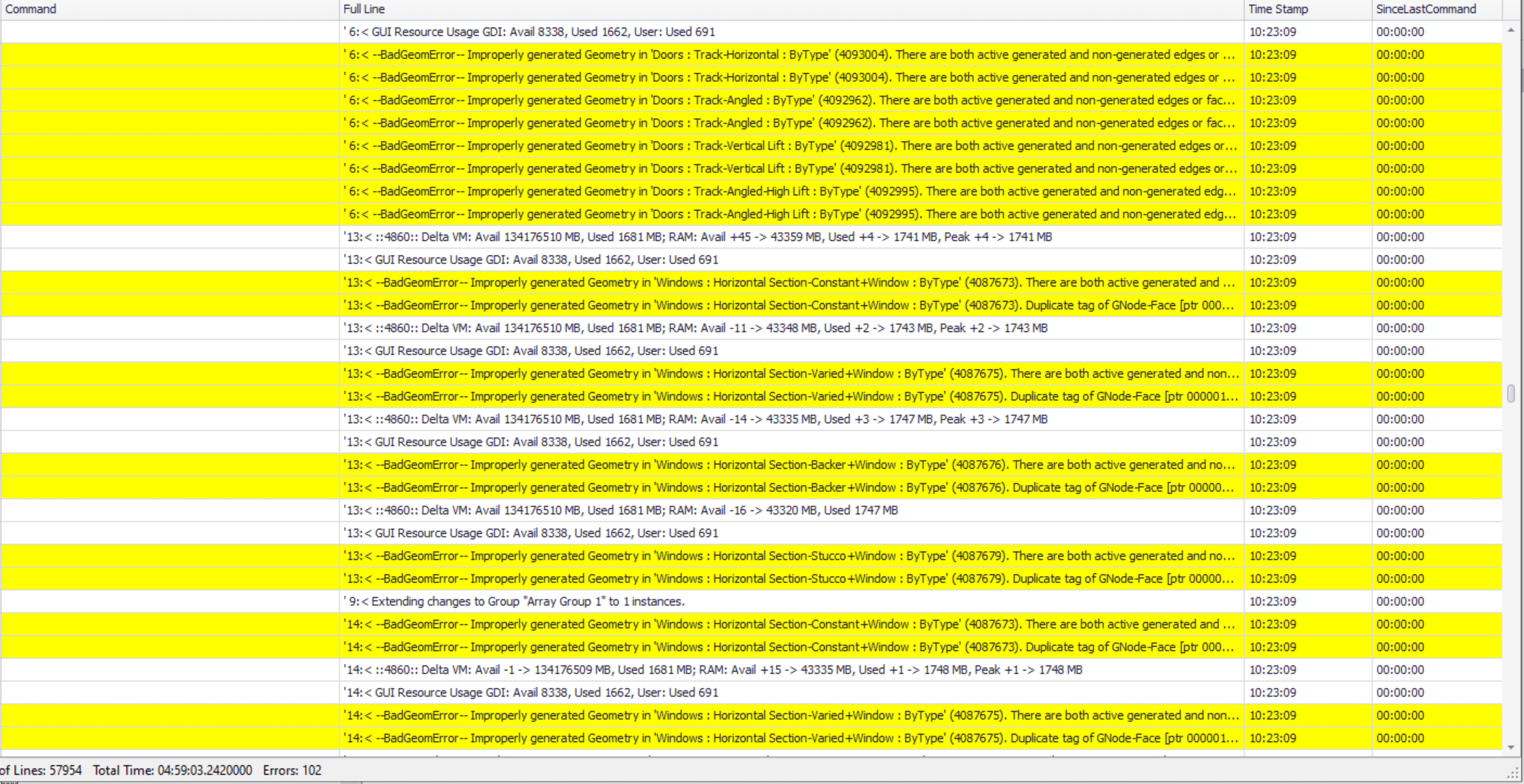IMAGINiT Utilities for Revit: Journal Reader
Part 2: Using the IMAGINiT Utilities for Revit Journal Reader:
Coming back to our discussion regarding Revit journals and the Revit Journal Reader Utility in IMAGINiT’s Utilities for Revit, we will now discuss in Part 2 the Journal Reader Utility.
How to Access the Journal Reader:
When you purchase a subscription through IMAGINiT, you will have access to the IMAGINiT Utilities for Revit. This utility is designed to allow for users to easily read Revit Journal files.
To access:
1. In a Revit project, navigate to the IMAGINiT tab.
2. Click on ‘Journal Reader’.
3. The Journal for the current session will be displayed without the need to navigate to the %temp% folder location.
4. You can select the ‘View’ tab in the tool to filter by commands, basic file information, file downloads, errors, comments, or other.
5. Under ‘Tools’ there is a ‘Find’ option to allow you to search for specific text within the journal.

The data will be configured into several columns for ‘command’, ‘full line’ (from the journal text), ‘Time Stamp’ and ‘SinceLastCommand’ (displays the time since the last command was entered).
At the bottom of the Journal Reader, you will see displayed the total number of lines, total time, and the number of errors that were reported in the journal.
Also within the Journal Reader there are filtering options under the ‘View’ tab. The filters include:
· Commands
· BasicFileInfo
· DownloadFile
· Errors
· Comments
· Other
In addition to the several filtering options, there is also a search command under the ‘Tools’ tab >Find>Text which allows you to search for specific words/terms in the journal.

Example of the contents in a Revit journal file from the default Notepad application in Windows.
Some common events to look for in the journals after experiencing a technical issue within Revit:
· System crashes:
· Slowness/latency:
· ‘!!!BIG GAP’ errors
· Errors during open/save/sync operations:
· File crashes while working in the file (not related to open, save, or sync actions):
· Element based errors (similar to the warning dialog box that pops up in Revit, or when running a coordination review. Example:
· “'C 06-Dec-2023 15:26:35.374; DBG_INFO: AutoJoin is missing some elements at the end of transaction: line 841 of E:\Ship24.1.1\2024_px64\Source\Revit\RevitDB\Undo\ADocumentUndo.cpp. 15:26:3500:00:00.0230000”

Example of errors found in the Revit journal using the ‘Errors’ filter in the Journal Reader utility.
I personally like using this tool because it saves me time reading through the journal via notepad, and I don’t have to build out my own scripts to filter the journals like I did when using Notepad++. Being able to quickly find errors in my journals saves me time from either writing a search script for use in Notepad++ or spending hours scrolling manually through the raw .txt file. The Journal Reader also places the errors in context to the commands and comments recorded in the journal (by using the filtering options in the Journal Reader). I cannot count the number of times I have needed to dig through massive .txt journals in order to diagnose or troubleshoot an issue in Revit.
This tool and and 57 other tools can be found in our IMAGINiT Utilities for Revit. These tools are an added value benefit of purchasing your Revit licenses through us here at IMAGINiT.
For a guide to our IMAGINiT Revit Utilities see: (attached PDF Guide) and visit our Utilities for Revit website at IMAGINiT Utilities for Revit.
Stay tuned for more blog updates about our Revit utilities!
About the Author
Follow on Linkedin More Content by Scott Green























